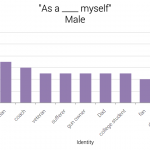ID graphs: The path to identity resolution
If you’re not familiar with what an identity graph is, it’s time to bone up on the term and add it to your arsenal. Columnist Mike Sands walks you through the ins and outs of ID graphs.

Among consistently hot marketing subjects like mobile and social, or buzzed-about trends like artificial intelligence and marketing automation, identity is emerging as a key marketing topic. Recognizing customers across devices and stitching that information together into a single view has never been more relevant.
- A Forrester report claims identity is the “next competitive battleground,” yet “one of the few truly unique assets companies own.”
- The Direct Marketing Association considers cross-device identity so challenging they’ve created a primer to help marketers and tech companies speak the same language.
But taking a step back from the reports and headlines, the real-world question marketers frequently ask is: “How do I get started with resolving cross-channel identity?”
Cross-channel identity is certainly a complicated marketing discipline. Marketers have adopted various technologies to help them better connect with multi-screening customers who are switching among four connected devices every day.
In fact, marketers on average use more than 12 distinct toolsets to support data-driven marketing efforts. But these various technologies don’t work together, leaving brands with a fragmented view of the customer that’s stuck in each platform.
Truly understanding the person behind the ever-changing screen of choice is critical for marketing success. Without cross-device identity resolution, marketers can’t recognize and target customers with the right content in the right context across screens. And this, in turn, may lead to annoying customers, fueling indifference and turning them away.
Enter the identity graph (ID graph). It may be a new term to some, but it’s soon to be part of every marketer’s vocabulary, if not their strategic arsenal.
As platforms proliferate, so, too, do customer identifiers. The identity graph provides a way to collect and connect multiple, cross-channel data points to individual customers. This unified data asset can then be used for people-based targeting, measurement and personalization.
There is no standard model for an ID graph. The type of personally identifiable information used as its foundation, matching methods employed and ownership all impact an ID graph’s ability to unite everything a brand knows about a customer to enhance insights, fuel people-based strategies and drive marketing success. Here are the key concepts marketers need to understand when considering an identity graph solution.
Identity graph: 101
First off, let’s be clear about what an identity graph is. An identity graph, or ID graph, is one database that holds customer profiles and all the known identifiers that correlate with individual consumers.
Customer profiles are a collection of identity and descriptive data used to target and personalize marketing messages. During the customer journey, many types of personally identifiable data can be associated to one person: physical and email addresses, mobile phone numbers, device IDs, account usernames, loyalty numbers and an ever-changing array of cookie data. These identifiers are collected and connected into a customer profile, which lives in the ID graph, along with related behavioral data, such as browsing history or past purchase information.
Control issues
Ownership is perhaps one of the most important considerations about ID graphs.
Social networks, onboarding providers and ad partners all offer their own ID graph solutions. However, the caveat to working with third-party ID graphs is that marketers are restricted to the capabilities and insights uncovered by these partners.
So while marketers may gain scale, they gain limited or, in some cases, no user-level data or insights about their customers. This prohibits marketers from effectively measuring their marketing efforts and building customer relationships.
Not surprisingly, marketers are increasingly frustrated by the constraints of third-party data borders. This is why ideally, brands should own their ID graphs.
When a brand controls the identity graph, marketers get a complete view of the customer journey, enabling them to build deep, rich profiles and close the loop on attribution.
Matchmaking
Another hotly discussed topic regarding ID graphs is the method used to match data: deterministic vs. probabilistic.
A deterministic approach is the gold standard when it comes to matching. When a user “authenticates” — in other words, makes a credit card purchase or logs onto a website — it facilitates a match that is 100 percent certain across channels and devices.
The more scalable alternative is probabilistic matching. This approach calculates the probability of a user being connected to any number of devices using sophisticated algorithms and patterns. While not absolutely accurate, it is an educated guess.
Building an addressable asset
True people-based marketing requires always-on recognition. Marketers need to be able to identify and react to their customers in the moment across any touch point. This isn’t possible if customer profiles are tied to non-authenticated identifiers, such as decaying third-party cookies or device- or channel-specific IDs that address identity on a campaign-by-campaign basis.
To power addressable media, the ID graph must be tied to customer profiles that are persistent. Persistent profiles are built from authenticated IDs, which can include email addresses or login IDs.
Wherever and whenever a customer authenticates across channels or devices, the identity graph links the first-party data to the customer’s profile. The persistent profile accrues more data with every interaction, growing richer, deeper and more valuable over time.
The need for speed
Finally, there’s the issue of speed. Consumers have come to expect immediate gratification. This means the time it takes an ID graph to process data is critical for real-time people-based marketing.
ID graphs that retrieve data from the static batch files of various channel platforms typically take a week to upload, make a customer ID match, and then push out the IDs — that’s a week too late when customers are ready to buy now.
Engaging the right customer with the right message at the right moment is only possible with real-time tech for collecting, matching and activating data. ID graphs that can simultaneously synchronize live data with a brand’s offline data, from CRM (customer relationship management) systems to call center records, equip marketers with the always-on recognition they need to engage customers at critical points in the customer journey.
Identity isn’t just marketing’s latest buzzword; it’s a strategic imperative. Marketers need to start implementing identity strategies to support robust targeting, personalization and addressability across touch points.
Understanding identity graphs is a first step in that direction. Working with a unified data set, brands can understand and relate to customers with meaningful, in-the-moment experiences along the increasingly complicated path to purchase.
Some opinions expressed in this article may be those of a guest author and not necessarily Marketing Land. Staff authors are listed here.
Marketing Land – Internet Marketing News, Strategies & Tips
(87)














